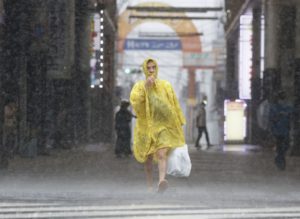On July 24, Pope Francis arrived in Canada for a papal visit that lasted five days. The visit’s aim was to start a dialogue with Indigenous Peoples regarding the Catholic Church’s role in Canadian residential schools.
What Propelled The Meeting?
In the wake of 2015, Canada’s Truth and Reconciliation Commission (TRC) published a report which detailed the poor treatment of the Indigenous population in their country from the 19th century to the 20th century. The report even declared that Canada’s policy regarding Indigenous Peoples was considered a “cultural genocide.” This is because the Canadian government attempted to eliminate Indigenous culture, and governmental structures, and ignore their rights. To do this, the Canadian government collaborated with Catholic and Protestant churches to run 139 residential schools. The goal of the schools was to sever any link between Indigenous children and their culture. Around 70% of these schools were run by the Catholic Church and it was estimated that 150,000 students were sent to be educated in these institutions.
Since then, people who attended these schools have explained that they were abused both physically and sexually by those who ran the schools. This is not the only scandal that has come out of these schools. In the last few years, the bodies of more than 1,300 Indigenous Peoples were found on the grounds of several residential schools in Canada. In addition, it is estimated that out of the 150,000 children which were sent to study there, between 10,000 and 50,000 children never came home.
Seeing the role that the Catholic Church played in this genocide, Indigenous Peoples in Canada were waiting for Pope Francis’ visit and apology. However, many believe that an apology is not enough and that there is a need for financial compensation for the victims as well as their families. Furthermore, since the Pope’s visit, the Indigenous Peoples have been waiting for a papal statement regarding the Doctrine of Discovery.
What is The Discovery Doctrine and What Role Did it Play?
The Discovery Doctrine was established by a papal decree in 1493. It stated that explorers from the Christian world were allowed to claim terra nullius (“nobody’s land”) on any land which was not owned or populated by Christians. This gave Western colonizers the right to expropriate natives all around the world. This doctrine was widely used in Canada, as well as the United States. The status of Aboriginal lands changed in 1763 when King George III declared some guidelines regarding the colonization of Aboriginal territories. First and foremost, the land would now be considered Aboriginal and no longer terra nullius. However, settlers could purchase Aboriginal lands through the Crown. This made the Crown the sole purchaser of Aboriginal land.
Yet, this royal proclamation raised another issue: native tribes were not able to sell their own land to individuals. This issue was brought to light in the 1823 US case of Johnson v. M’Intosh. This case centered around Thomas Johnson who purchased land in Virginia from members of the native tribe of Piankeshaw in 1775. When Mr. Johnson died, he left the land that he had purchased to his children. However, in 1818, William M’Intosh purchased the same land directly from the US government. Soon after, Johnson’s children took M’Intosh to court. The court ruled in favor of M’Intosh and declared that native tribes had no right to sell the land to individuals. They specified that only the American government was allowed to purchase the lands. Because there was no competition, the American government could purchase the land at their desired price, thus creating a monopsony. Robert Miller, an American legal scholar, explained that the 1823 ruling has since been used in multiple cases across the world. In fact, it has been cited by courts in Canada 70 times.
Today Indigenous Peoples are looking to repudiate this doctrine and an official announcement from the Pope is what they are expecting the most. Other churches, such as the Anglican Church of Canada in 2010, have already repudiated the doctrine. Indigenous Peoples are also asking the new English monarch, Charles III, to repudiate the doctrine. As more than just a symbolic gesture, this would give more control to the Indigenous Peoples over their own land.
The Indigenous Peoples are also looking for Pope Francis’ help to bring justice to sexual assault victims of Catholic priests. In February of 2022, retired priest Johannes Rivoire was charged by the Canadian police with sexual assault related to his work in northern Canada between the 1960s and 1993. He is now 93 and resides in France, and the French Ministry of Justice has refused to extradite him. After Pope Francis’ visit, it seems that the Indigenous Peoples are hopeful that things will change. One of Rivoire’s victims explained that: “I’m hoping (Francis) can help. We’re Inuit, we have feelings too. We’re hurt from inside to outside.”
Many consider this visit a step in the right direction. Pope Francis did recognize that the actions of the Catholic Church in Canada were a genocide. However, a month after his visit to Canada no real declaration has been made regarding Rivoire, and the Doctrine of Discovery has still not been revoked. The upcoming months will determine whether or not the Pope’s apology will have a real impact.
Featured image by: Nathan Denette/The Canadian Press via Associated Press






